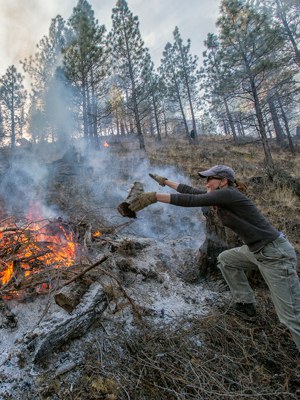
The Land Trust acquired Aspen Hollow Preserve in 2015. One of our goals for the Preserve is to restore the Preserve’s ponderosa pine and aspen stands to provide high quality wildlife habitat and help reduce fire risk.
In 2019, the Land Trust secured funding to start forest restoration work. The Preserve is home to a mixed juniper and ponderosa pine forest interspersed with small aspen groves. Our forest restoration goal was to thin the small juniper, as well as some of the pine, to mimic historic conditions and improve the health of the remaining pine and aspen. It also benefited the native grasses and wildflowers, provide improved habitat for wildlife, and help reduce wildfire danger for our nearby neighbors.
Thinning was completed in the fall of 2019 on on the south side of the Preserve where juniper was encroaching on pine and aspen. Because of the steep, challenging terrain, we cut and piled by hand without the use of heavy equipment. Piles were then burned in early 2021. Another round of thinning took place in 2022, with pile burning in early 2023.
We'd like to send a big thanks to our Aspen Hollow Preserve neighbors that provided access onto their properties so we could acquire aerial imagery of the restoration area before we begin work. These photos will be compared to post-restoration images and provide a great monitoring tool over time.
Check out a video showing some of our forest restoration work at Aspen Hollow Preserve:
Learn more:
- About historic conditions in healthy east Cascade pine forests.
- About the Land Trust's Whychus Canyon Preserve forest restoration.
- About the Land Trust's Metolius Preserve forest restoration.


